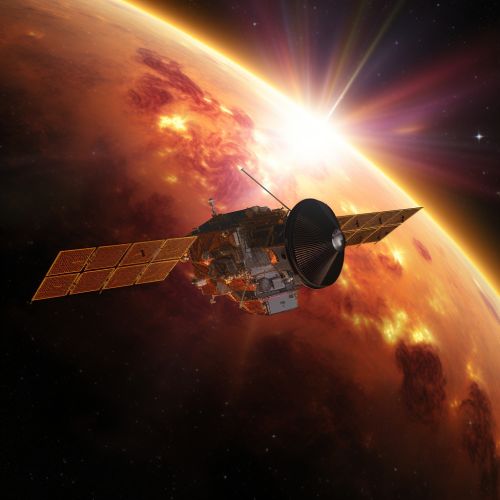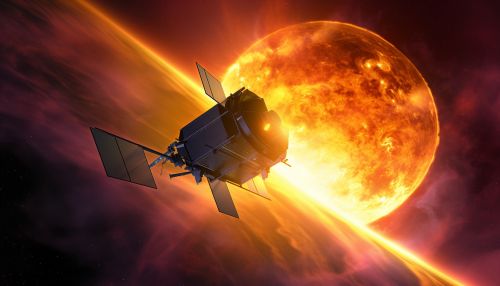Solar and Heliospheric Observatory
Introduction
The Solar and Heliospheric Observatory (SOHO) is a spacecraft built by a wide collaboration between the European Space Agency (ESA) and the National Aeronautics and Space Administration (NASA). Launched on December 2, 1995, SOHO's mission is to study the Sun from its deep core to the outer corona and the solar wind.


Mission Objectives
SOHO's primary mission is to observe the Sun's atmosphere, known as the corona, and the solar wind, a stream of charged particles that the Sun continuously emits into space. The spacecraft is equipped with a suite of scientific instruments designed to measure the flow of energy and matter from the Sun to the Earth, to investigate the physical processes occurring in the Sun's corona, and to probe the structure and dynamics of the solar interior.
Design and Instruments
SOHO is a three-axis stabilized spacecraft with a mass of about 1,850 kilograms. It carries twelve scientific instruments, some of which are:
1. The Large Angle and Spectrometric Coronagraph (LASCO): This instrument is designed to study the structure and evolution of the corona. It does this by taking images of the corona over a wide field of view, from 1.1 to 32 solar radii.
2. The Extreme ultraviolet Imaging Telescope (EIT): EIT captures high-resolution images of the solar corona in four different wavelengths. These images provide information about the temperature and density of the coronal plasma.
3. The Michelson Doppler Imager (MDI): MDI measures the speed of solar material moving towards and away from the spacecraft. This data is used to study the dynamics of the solar interior.
4. The Solar Wind Anisotropies (SWAN): SWAN measures the solar wind flow anisotropies and their temporal evolution.
Discoveries and Achievements
Since its launch, SOHO has made numerous significant contributions to our understanding of the Sun. Some of its key discoveries and achievements include:
1. The detection of sunquakes: SOHO's MDI instrument has observed waves on the Sun's surface caused by solar flares. These waves, similar to earthquakes on Earth, provide valuable information about the Sun's interior structure.
2. The discovery of new comets: As of 2020, SOHO has discovered over 3,000 comets, making it the most successful comet finder in history.
3. The observation of coronal mass ejections (CMEs): SOHO's LASCO instrument has provided unprecedented views of CMEs, huge eruptions of solar material that can cause geomagnetic storms and disrupt communications and power systems on Earth.
4. The measurement of the solar wind: SOHO's SWAN instrument has provided detailed measurements of the solar wind, improving our understanding of how the Sun affects the space environment around Earth.
Current Status and Future Plans
As of 2021, SOHO is still operational and continues to provide valuable data about the Sun. Its mission has been extended several times, and it is currently expected to remain operational until at least 2022. Future plans for SOHO include continued observations of the Sun and further analysis of the data it has collected.
